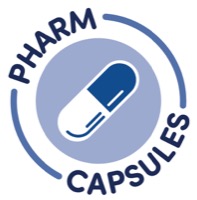
Medicare Part D beneficiaries and the U.S. government have the potential to save tens of millions of dollars if enrollees buy self-administered oncology drugs using low-cost outlets like Mark Cuban Cost Plus Drug Company (MCCPDC), according to a new study.
MCCPDC is a public benefit corporation that sells generic drugs, charging their cost plus a 15% markup and a $3 pharmacy fee, with no more than $5 shipping assessed per prescription (up to a 90-day supply).
“We demonstrate that Cost Plus Drugs has the potential to improve access to essential cancer medications through reduced out-of-pocket costs for patients, even if they have insurance coverage in or out of Medicare,” said study author Ruchika Talwar, MD, a Urologic Oncology fellow at Vanderbilt University Medical Center, in Nashville, Tenn. In particular, the study (J Clin Oncol 2023 Jun 8. doi:10.1200/JCO.23.00079) demonstrated “a huge potential for savings (in the millions up to billions of dollars) for taxpayers if Medicare paid for generic cancer drugs via the Cost Plus pricing model,” Dr. Talwar continued. “This really emphasizes the fact that Medicare is overpaying for medications, and it’s coming out of all of our pockets.”
Some of those overpayments may be mitigated by Medicare’s new ability to negotiate discounts for 10 initial drugs, thanks to the Inflation Reduction Act (IRA), which was signed into law in August 2022 (story, page 1). In the meantime, MCCPDC has the potential for exerting its own effects on the financial toxicity of prescription drugs. Indeed, Dr. Talwar and her team estimated that if seven common oncology drugs were bought through MCCPDC, $661.8 million could be saved. The cumulative savings represent a 78.8% reduction in what Medicare and its recipients were paying for these drugs.
The range of total estimated savings was calculated to be $228.1 million (56.1%) to $2,154.5 million (92.4%) compared with, respectively, the 25th and 75th percentiles of Medicare Part D expenditures per unit (MPDEPU) for the seven drugs in the study.
In nearly every comparison in the study, the 30-day prescription drug prices offered by MCCPDC generated substantial cost savings, with the exception of anastrozole, letrozole and tamoxifen when compared with MPDEPU at the 25th percentile.
Dr. Talwar noted that those three drugs are “likely fairly priced when comparing how much Medicare pays for them versus what you can buy them for via MCCPDC, and that’s a good thing.” She pointed out that what concerns her more is “the degree of difference between those drug comparisons versus imatinib and abiraterone when bought through Medicare versus through low-cost outlets.”
The median savings for replacing Part D plan prices with MCCPDC-sourced drugs were:
- abiraterone at $338 million;
- anastrozole at $1.2 million;
- imatinib 100 mg at $15.6 million;
- imatinib 400 mg at $212 million;
- letrozole at $1.9 million;
- methotrexate at $26.7 million;
- raloxifene at $63.8 million; and
- tamoxifen at $2.6 million.
Researchers generated their comparison using the 2020 Medicare Part D spending dashboard, Q3-2022 Part D formulary prices and Q3-2022 MCCPDC prices for the seven self-administered generic oncology drugs. Estimated Medicare savings were determined by replacing Q3-2022 Part D prices with data from the MCCPDC plan.
Dr. Talwar reported no relevant financial disclosures.
FDA Proposes More Patient-Friendly Medication Information
Between 7,000 and 9,000 patients die from medication-associated errors (MAEs) in the United States each year, and the cost of treating patients who experience an MAE exceeds $40 billion annually. To counter the economic and physical cost of MAEs, the FDA has proposed guidelines for new, easy-to-read medication guides known as Patient Medication Information (PMI).
“PMI is meant to be easily read and understood by the general population, including those with low literacy and comprehension levels,” Bryon M. Pearsall, JD, RPh, the director of the Division of Medical Policy Programs at the FDA Center for Drug Evaluation and Research Office of Medical Policy Initiatives, said in an FDA press release. “Information [in PMI] will highlight the most important information that patients need to know about the prescription drug product, including basic directions on how to use the product.”
PMI would cover prescription drugs; blood and blood components; and some biological products used, administered or dispensed to outpatients in the United States, and would be available to the general public online.
All PMI would be FDA-approved one-page documents in a standardized format that would include:
- each product name;
- a concise summary of the indications and uses;
- important safety information;
- common side effects; and
- directions for use.
In particular, the agency said, standardized formatting may help facilitate translations to other languages and make it easier for new technologies, such as artificial intelligence, to use the information to help patients who are visually impaired.
When the PMI proposed rule is finalized, the guides will replace current Medication Guides and Patient Package Inserts.
The proposed rule is available for public comment until Nov. 27, 2023). After the public comment period ends, the FDA will review and address the comments received, and develop a final rule for publication, although the exact date of publication of the final rule has not yet been publicly announced.
Robert M. Califf, MD, MACC, the FDA’s commissioner of food and drugs, described the proposed rule as a practical step toward improving the nation’s health. “We view this proposal as one way to fight our nation’s crisis with healthcare misinformation and disinformation, which is a top priority for the agency,” he said in the FDA’s press release. “Having ready access to direct and easy-to-understand information in a consistent format for prescription drugs and certain biological products may reduce instances of both accidental and purposeful misinterpretations.”
Mr. Pearsall reported no relevant financial disclosures.
Decentralized Trials Could Benefit Rural Populations
New draft guidelines from the FDA governing decentralized clinical trials (DCTs) of biological products, medical devices and drugs could usher in an era of greater access to new and life-changing therapies, according to the agency.
The guidelines aim to make fully decentralized trials possible in cases where investigational products (IPs) are simple to administer or use, have well-established and clear safety profiles, and do not require complex medical assessments for use.
“The ‘changes’ addressed in the DCT guidance are designed to bring the trial to the patient rather than bringing the patient to the trial. Avoiding unnecessary visits to trial sites may make it easier for individuals to participate in trials, resulting in more diverse trial populations,” said Leonard Sacks, MD, the associate director of clinical methodologies within the Office of Medical Policy in FDA’s Center for Drug Evaluation and Research.
“DCTs may make it easier to study patients with rare diseases who live far from research centers. They may make it easier for patients with cognitive or mobility problems to participate in trials,” Dr. Sacks added.
The draft document contains several provisions for improving trial access, including:
- outreach through local healthcare institutions and providers beyond what would be possible in a centralized trial, to strive for diversity and inclusiveness in study populations;
- a data management plan that accounts for methods of data collection and storage from each local lab and provider, including quality control measures that reduce variability in data collected across several locations;
- delivery of IPs to trial participants and accountability for IPs, with a description in the protocol of how the physical integrity and stability of the IP will be maintained during shipping and storage; and
- proper monitoring of the investigation, noting any unique aspects related to DCT features.
Dr. Sacks reported no relevant financial disclosures.
This article is from the October 2023 print issue.




